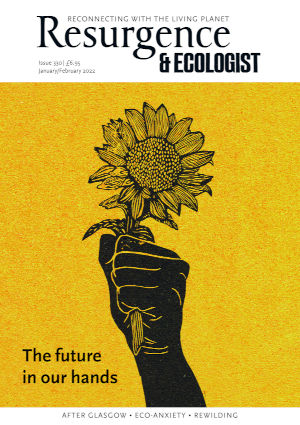In the very long term – many thousands of years – global warming could be good for humanity and the natural world, at least if it came upon us slowly, with time for life to adapt. Greenland would be green again and enormous areas of Siberia, Canada and even Antarctica would be opened up to a vast array of creatures as they were in the past, and to sizable populations of humans, as they never were in the past. But in the immediate term and for the foreseeable future, as everyone knows, global warming is a disaster. The lowlands flood, the forests burn, wildlife perishes and ancient cultures and languages disappear.
Trees are the very visible indices of change. Their fate reflects the state of the whole world – and what happens to them is the cause of further change, since to a large extent they are the makers of landscape and of weather, and so many other creatures, including humans, depend on them. For the past few years, Ben Rawlence has been observing and analysing their changing fortunes, not, as is more usual, in the tropics or in England, where woods and forest are rapidly being reduced to pasture and desert, suburb and bypass, but in the North: Scotland, Norway, Russia, Alaska, Canada and Greenland.
The position is complex, however – as illustrated not least by the rise and rise of Betula pubescens, the downy birch, in Norway. We are generally told – and quite rightly – that the loss of trees is a catastrophe. We lose habitats and their wildlife, and also lose one of the principal mechanisms by which the world’s climate is ameliorated – for trees en masse create rain but also reduce flooding, and remove warming carbon from the atmosphere. The present, frenetic deforestation is suicide. But in Norway a whole range of creatures including the iconic, keystone reindeer need a very cold and therefore treeless landscape. When the ground is covered with snow, which it is for much of the year, the reindeer dig through it to the highly nutritious lichen beneath and in normal conditions this is easy, for when it’s very cold the snow is like sand. But when it’s warmer, the snow half-melts and then freezes to form ice, which the reindeer find hard or impossible to penetrate. Besides, the lichen does not grow so well in warmer conditions, when it faces more competition from other plants.
The Sámi people follow the reindeer as they migrate north and south with the changing seasons, and build their lives around them: milk, meat, hides, horn, bones and transport. Traditionally they let the reindeer decide when and how quickly they migrate, for they are most in tune with the landscape and the weather. Nowadays, though, says Rawlence, the government seeks to regulate, as governments do, and to tell the Sámi (and the reindeer) where to go and when. Few governments are properly aware of ecological realities.
Traditionally, too, the downy birch stayed further south or lurked in hollows, sheltered from the worst of the weather. But as the climate has grown warmer these trees, says Rawlence, have emerged from their trenches “like infantry”, and marched across the landscape, turning it first to scrub, and soon to woodland. This adds to the global tree cover, to be sure – but at the expense of a precious, specialised landscape and the creatures and culture that went with it. Very little in this world – not even trees – is unequivocally good.
Rawlence is a fine ecologist and an excellent writer with the rare ability both to tell an absorbing tale and to convey the subtleties of science. The Treeline is timely, salutary and eminently readable. Excellent.






